by Mark Mallett
My son, when you come to serve the LORD… prepare yourself for trials… undisturbed in time of adversity. Wait on God, with patience, cling to him, forsake him not; thus will you be wise in all your ways. Accept whatever befalls you, when sorrowful, be steadfast, and in crushing misfortune be patient; for in fire gold and silver are tested, and worthy people in the crucible of humiliation. Trust God and God will help you; trust in him, and he will direct your way… (Today’s First Mass Reading; cf. Sirach 2:1-11)
This passage from Sirach is one of my favorites. It doesn’t attempt to sanitize the cost of what it entails to be a faithful child of God, to be a disciple of Jesus: “Prepare yourself for trials”. What kind of trials? Humiliation, crushing misfortune, temptations, testing of one’s patience to the max, and having to cling to God and wait on Him when you really want deliverance now.
While not denying that the trials can be hard, cruel, and heartbreaking, Sirach nonetheless shows the correct path forward: a dispassionate abandonment to the Will of God. It is trusting that, even though our trials seem wholly unfair, God permits them for a greater purpose, not the least our personal purification.
Indeed, the Cross of Jesus does not signify the end of suffering but shows us precisely how to endure it: through dispassionate abandonment to the Father:
Jesus cried out in a loud voice, “Father, into your hands I commend my spirit” (Luke 23:46)
Our Lord’s cry was not one of anger towards the Father, fretting, frustration, self-pity, or anger but the verbalization of an interior disposition of total abandonment. Perhaps you and I could express it this way: “Father, in the midst of the pain of this trial, I accept that your Will is a better path than mine. Therefore, I put this present situation, my helplessness to change it, and all my unanswered questions into your hands. Fiat.“
I love how St. Elizabeth of the Trinity frames it:
Such is the attitude of this soul; she walks the way of Calvary at the right of her crucified [and] humiliated King, yet always so strong, so calm… The Lamb can lead her to the fountain of life where He wills, as He wills, for she does not look at the paths on which she is walking; she simply gazes at the Shepherd who is leading her. —from I Have Found God: Complete Works, Vol. 1;
Even if my first reaction is raw emotion, I then choose to raise my eyes from the trial, difficulty, or misfortune and fix them on Jesus “the leader and perfecter of faith” (Heb 12:2). It doesn’t mean to deny or pretend that He isn’t leading me on strange and difficult paths… up steep hills that test my inner strength, past frightening cliffs, and even valleys darkened by the shadow of death. I just say as best I can, “Okay, you are the Shepherd… I’ll go here too.”
But what about our passions and natural feelings and aversions to suffering? To be dispassionate does not mean to not feel but to not be overcome by those feelings. Let’s be totally honest: that is really, really hard at times. But when has throwing a fit, collapsing into self-pity, or blaming others ever made the situation better? Also remember that temptation is not a sin, no matter how strong you feel it. It’s only giving in to those feelings that causes us to lose our way.
Rather, Sirach tells us that waiting on God and clinging to Him (that is, following the Good Shepherd with abandon) is the only way forward that gives us wisdom. And wisdom teaches us what human rationalization alone cannot: that apparent contradictions and suffering have a divine purpose and eternal value.
Hence, says the Psalmist today:
Trust in the LORD and do good, that you may dwell in the land and be fed in security… The salvation of the just is from the LORD; He is their refuge in time of distress. And the LORD helps them and delivers them… (Psalm 37)
The “security” God grants is not insulation from suffering, but the grace to endure and be transformed by it. The refuge He offers is not the absence of storms but being Himself the “ark” that carries me through them. The deliverance God grants is liberation, not from adversity, but from myself — my sinfulness and devices.
Thus, declares the Gospel Acclamation, “May I never boast except in the Cross of our Lord Jesus Christ.”[1]Gal 6:14 Yes, may I never reject my trials but dispassionately and totally abandon myself to them… or rather, to the Father who permits them, always for my good.[2]cf. Rom 8:28
— Mark Mallett is the author of The Final Confrontation and The Now Word.



 Alicja Lenczewska
Alicja Lenczewska


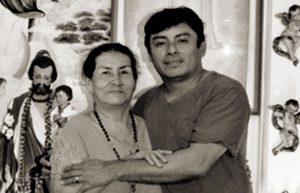
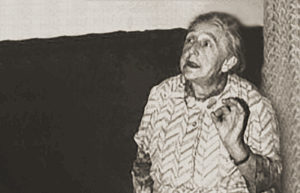 Elizabeth Kindelmann
Elizabeth Kindelmann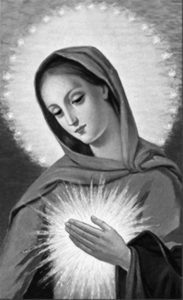 Through what became The Spiritual Diary, Jesus and Mary taught Elizabeth, and they continue to instruct the faithful in the divine art of suffering for the salvation of souls. Tasks are assigned for each day of the week, which involve prayer, fasting, and night vigils, with beautiful promises attached to them, laced with special graces for priests and the souls in purgatory. In their messages, Jesus and Mary say that The Flame of Love of the Immaculate Heart of Mary is the greatest grace given to mankind since the Incarnation. And in the not-so-distant future, her flame will engulf the entire world.
Through what became The Spiritual Diary, Jesus and Mary taught Elizabeth, and they continue to instruct the faithful in the divine art of suffering for the salvation of souls. Tasks are assigned for each day of the week, which involve prayer, fasting, and night vigils, with beautiful promises attached to them, laced with special graces for priests and the souls in purgatory. In their messages, Jesus and Mary say that The Flame of Love of the Immaculate Heart of Mary is the greatest grace given to mankind since the Incarnation. And in the not-so-distant future, her flame will engulf the entire world. Father Stefano Gobbi
Father Stefano Gobbi Why Gisella Cardia?
Why Gisella Cardia? Thirdly, the messages have frequently been accompanied by visible phenomena, photographic evidence found in In Cammino con Maria, which cannot be the fruit of subjective imagination, notably the presence of the stigmata on Giselle’s body and and the appearance of crosses or religious texts in blood on Gisella’s arms. See the pictures taken from her apparition website
Thirdly, the messages have frequently been accompanied by visible phenomena, photographic evidence found in In Cammino con Maria, which cannot be the fruit of subjective imagination, notably the presence of the stigmata on Giselle’s body and and the appearance of crosses or religious texts in blood on Gisella’s arms. See the pictures taken from her apparition website 
 Jennifer
Jennifer
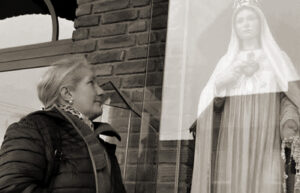 Why Manuela Strack?
Why Manuela Strack?

 Why the Visionaries of Our Lady of Medjugorje?
Why the Visionaries of Our Lady of Medjugorje? Why Pedro Regis?
Why Pedro Regis?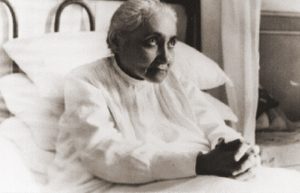 Why the Servant of God Luisa Piccarreta?
Why the Servant of God Luisa Piccarreta? of the saints. It wasn’t until she became a “Daughter of Mary” that the nightmares finally ceased at the age of eleven. In the following year, Jesus began to speak interiorly to her especially after receiving Holy Communion. When she was thirteen, He appeared to her in a vision that she witnessed from the balcony of her home. There, in the street below, she saw a crowd and armed soldiers leading three prisoners; she recognized Jesus as one of them. When He arrived beneath her balcony, He raised his head and cried out: “Soul, help Me!” Deeply moved, Luisa offered herself from that day on as a victim soul in expiation for the sins of mankind.
of the saints. It wasn’t until she became a “Daughter of Mary” that the nightmares finally ceased at the age of eleven. In the following year, Jesus began to speak interiorly to her especially after receiving Holy Communion. When she was thirteen, He appeared to her in a vision that she witnessed from the balcony of her home. There, in the street below, she saw a crowd and armed soldiers leading three prisoners; she recognized Jesus as one of them. When He arrived beneath her balcony, He raised his head and cried out: “Soul, help Me!” Deeply moved, Luisa offered herself from that day on as a victim soul in expiation for the sins of mankind. immobile, rigid-like state that appeared almost as if she were dead. It was only when a priest made the sign of the Cross over her body that Luisa regained her faculties. This remarkable mystical state persisted until her death in 1947—followed by a funeral that was no little affair. During that period in her life, she suffered no physical illness (until she succumbed to pneumonia at the end) and she never experienced bedsores, despite being confined to her little bed for sixty-four years.
immobile, rigid-like state that appeared almost as if she were dead. It was only when a priest made the sign of the Cross over her body that Luisa regained her faculties. This remarkable mystical state persisted until her death in 1947—followed by a funeral that was no little affair. During that period in her life, she suffered no physical illness (until she succumbed to pneumonia at the end) and she never experienced bedsores, despite being confined to her little bed for sixty-four years. Why Simona and Angela?
Why Simona and Angela?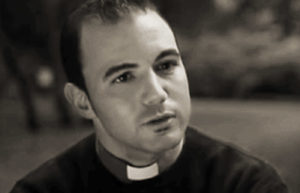
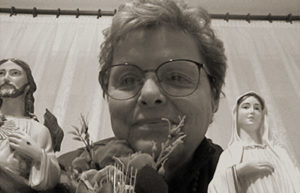 Valeria Copponi
Valeria Copponi